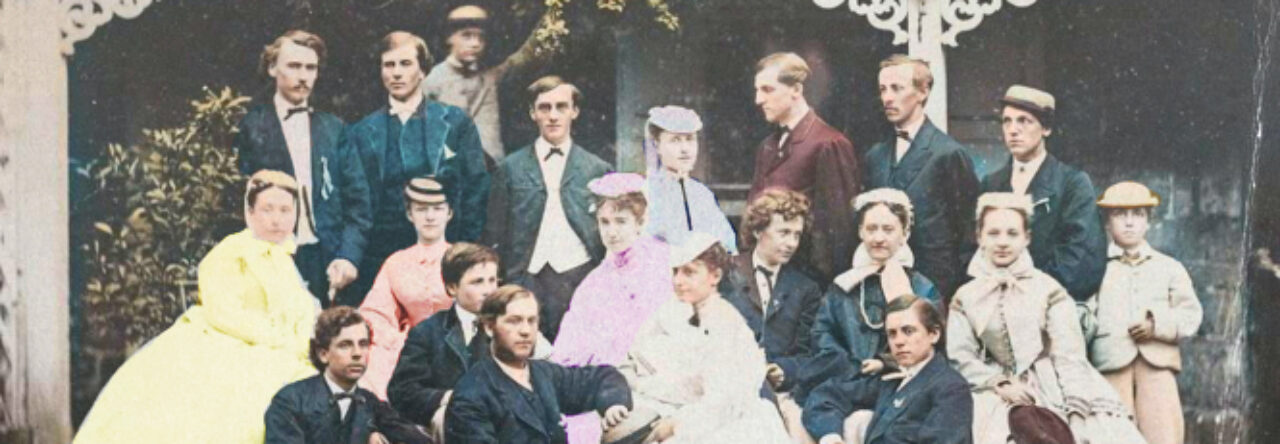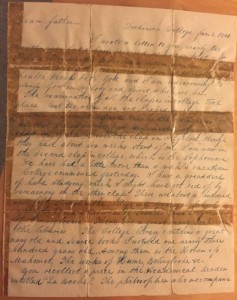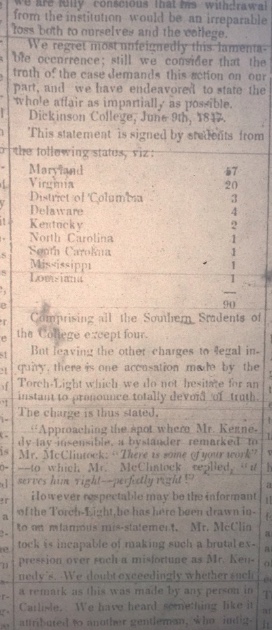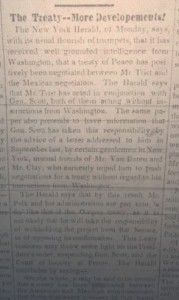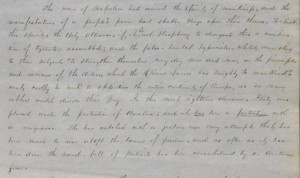Since the moment I started this research on the Class of 1845 of Dickinson College there were two students that got my attention. These students were Spencer F. Baird and Alexander Ramsey. The main objective of this research is to learn more about the life of Spencer F. Baird, and his work at the Smithsonian Institution. Regarding Ramsey, the objectives are to find sources that show his relationship with Lincoln, Lincoln’s involvement in the Dakota War, the Sioux’s tribe perspective, and Ramsey’s life. To accomplish these objectives, I researched in the library catalog, jumpstart, google books, jstor, and the America: History and Life database.
Allard, Dean C. “Spencer Baird and Support for American Marine Science, 1871-1887.” Earth Sciences History 19, no. 1 (2000): 44-57. [America: History and Life]
Dean C. Allard, archivist and historian, shows in his article Spencer Baird’s work in the Smithsonian Institution while also showing his work and importance in the US Commission of Fish and Fisheries. This article was chosen for the research because it does not only portray Baird working in the Smithsonian but it also shows his more important works outside the Smithsonian.
Christgau, John. Birch Coulie: The Epic Battle of the Dakota War. Lincoln: Nebraska Press, 2012. [LIRARY CATALOG]
Writer, John Christgau, shows in his book the consequences of the violent Dakota War, which included the proposed hanging of 300 Native Americans and the influences the war had on the population. The reason why this book was chosen for the research is because it does not only give an insight of the Dakota War influences, but also the injustice that the Native Americans had to go through after the end of the War.
Egerton, Frank N. “History of ecological Sciences, Part 38B: Naturalists Explore North America, 1838-1850s.” Bulletin of the Ecological Society of America, 92, no. 2 (2011): 153-184. [JSTOR]
In his article, historian, Frank N. Egerton, shows the beginning of the naturalists’ explorations in North America while also mentioning Baird and other important naturalists. Egerton talked about Baird’s job and contribution as a naturalist in the Smithsonian Institution, his writings as a naturalist, and the specimens he studied. This article is essential towards the research because it gives a glimpse of Baird’s contributions to the Smithsonian.
Haugland, John C. “Alexander Ramsey and the Birth of Party Politics in Minnesota.” Minnesota History 39, no. 2 (1964): 37-48. [America: History and Life]
Historian, John C. Haugland, shows in his book Ramsey’s political life and his involvement in the Whig Party. The reason why this article was chosen is because it gives a glimpse of Ramsey’s political life which led him to become the governor of Minnesota when it was a territory and how he tried to spread his political party in Minnesota.
Haymond, John A. The Infamous Dakota War Trials of 1862: Revenge, Military Law and the Judgement of History. North Carolina: McFarland, 2016. [GOOGLE BOOKS]
In his book, conflict historian, John A. Haymond, talks about the end of the Dakota War when 300 Native Americans from the Sioux Tribe were sentenced to death. Haymond also demonstrates how the decision of executing the Native Americans was made and how this dark moment in American history is portrayed today. The importance of this book towards the research is that it gives a glimpse of the trials that the Sioux Tribe had to go through after the Dakota War which concludes with the hanging of thirty-eight Native Americans.
Myers, Susan H. “The Smithsonian Institution and American Glass Manufacturers, 1886-1896.” Journal of Glass Studies, 49 (2007): 207-230. [JSTOR]
In her article, curator, Susan H. Myers, gives a small background of how the Smithsonian Institution was founded and then continues to describe Spencer Baird’s vision for the museum. She shows that Baird’s focus as the secretary of Smithsonian was to expand the collections and exhibitions that the museum had. The article also shows that Baird was not only interested in incrementing the natural collection but he also wanted to expand others such as acquiring glass.
Niebuhr, Gustav. Lincoln’s bishop: a president, a priest, and the fate of 300 Dakota Sioux warriors. New York: HarperOne, 2014. [LIBRARY CATALOG]
In his book Lincoln’s bishop: a president, a priest, and the fate of 300 Dakota Sioux warriors, Gustav Niebuhr, associate professor of Syracuse University shows a new side of the Dakota War that is not often seen. Here it can be seen how bishop, Henry Bejamin, influenced President Lincoln to intervene in what was going to be the execution of 300 Native Americans. Niebur’s book is important for the research because it shows a new variable in the complicated Dakota War while at the same time showing Lincoln’s role at the end of the Dakota War when he saved 265 Native Americans.
Rivinus, Edward F., and E. M Youseff. Spencer Baird of the Smithsonian. Smithsonian Institution press, 1992. [LIBRARY CATALOG]
This biography written by E.F Rivinus and E.M Youseff shows Baird’s life as a professor, naturalist, and as secretary of the Smithsonian. This biography was selected for the research because of the insight it gives of Baird’s life before he went to work to the Smithsonian and his work while he was there.
